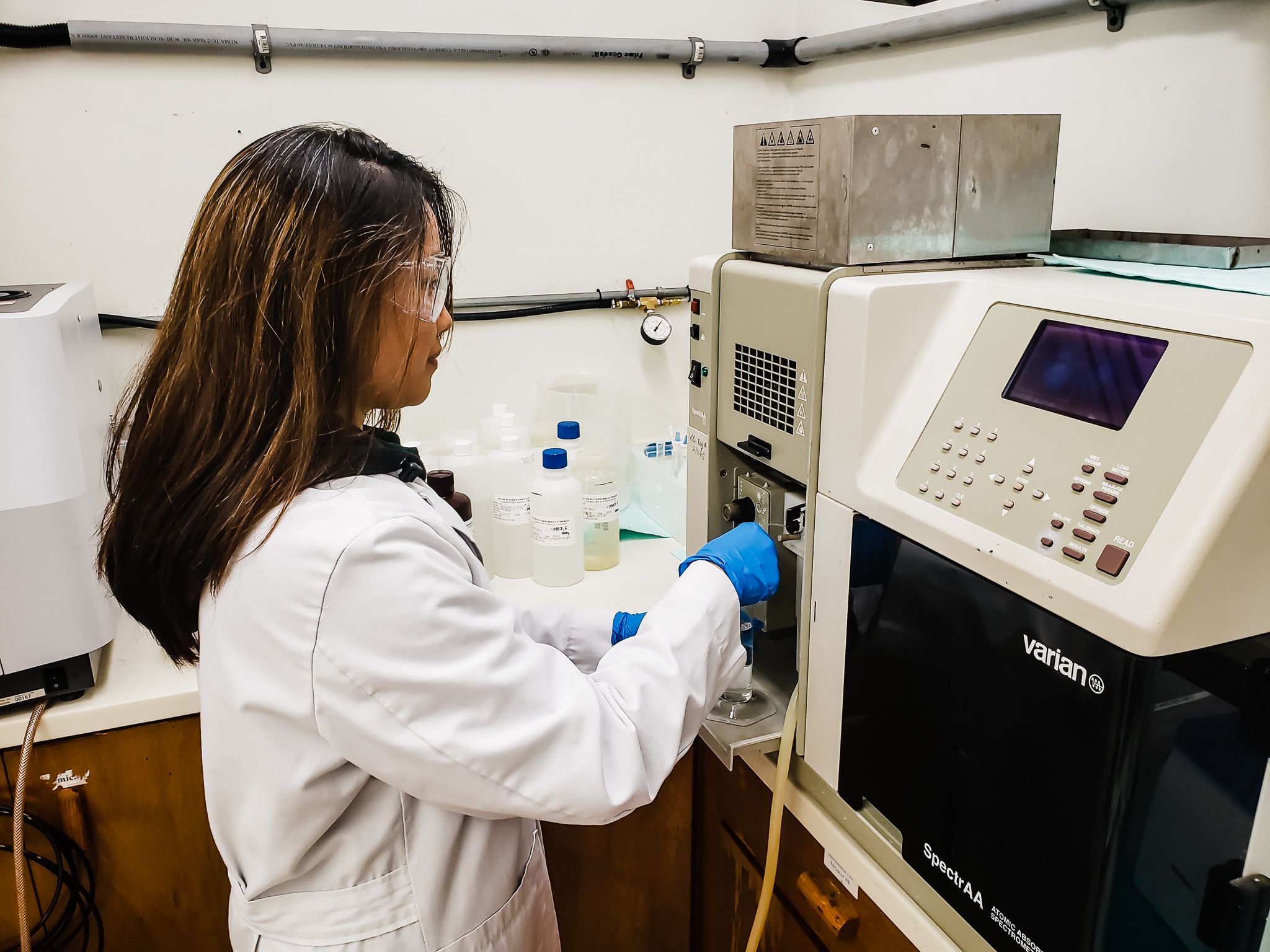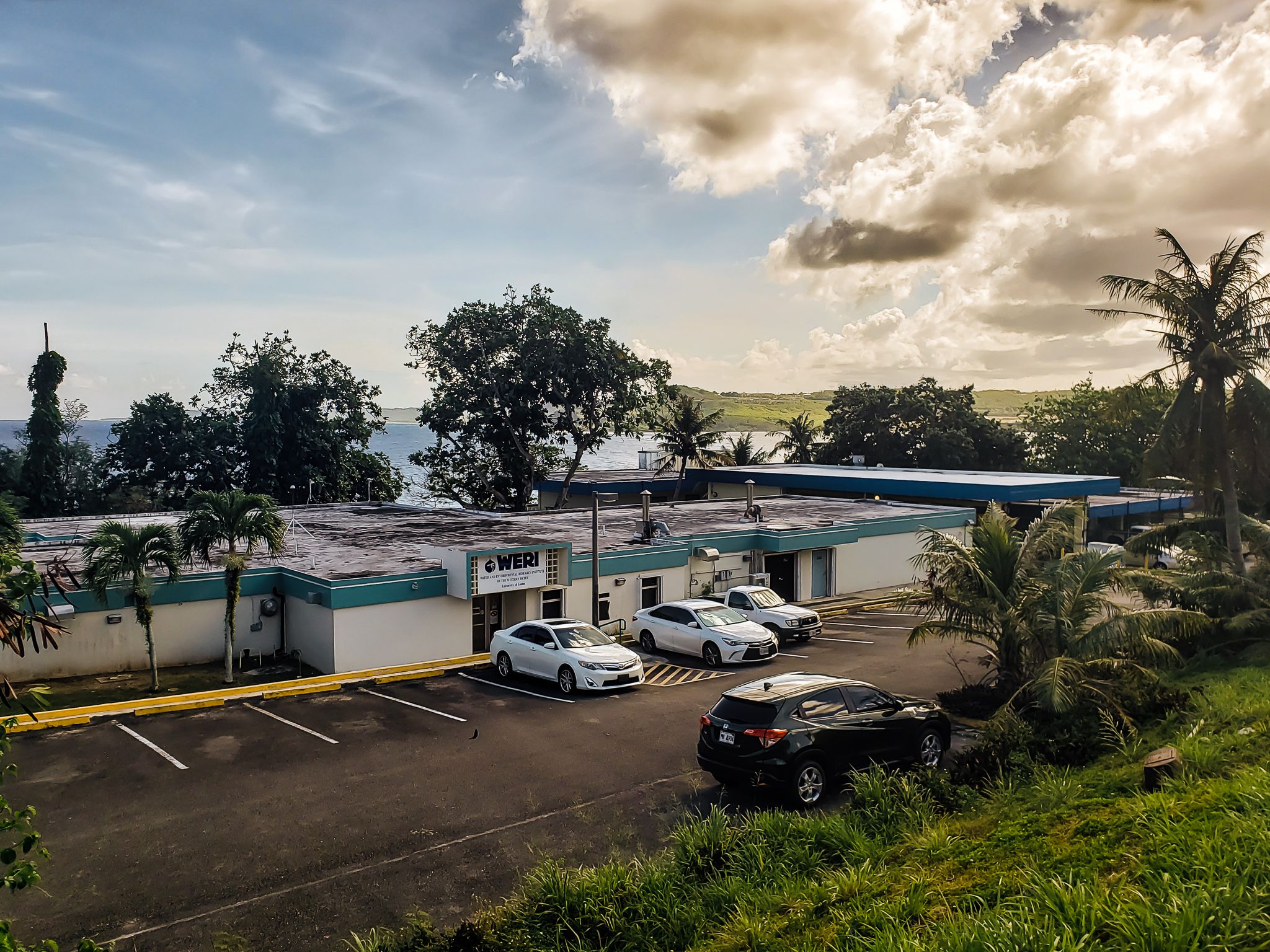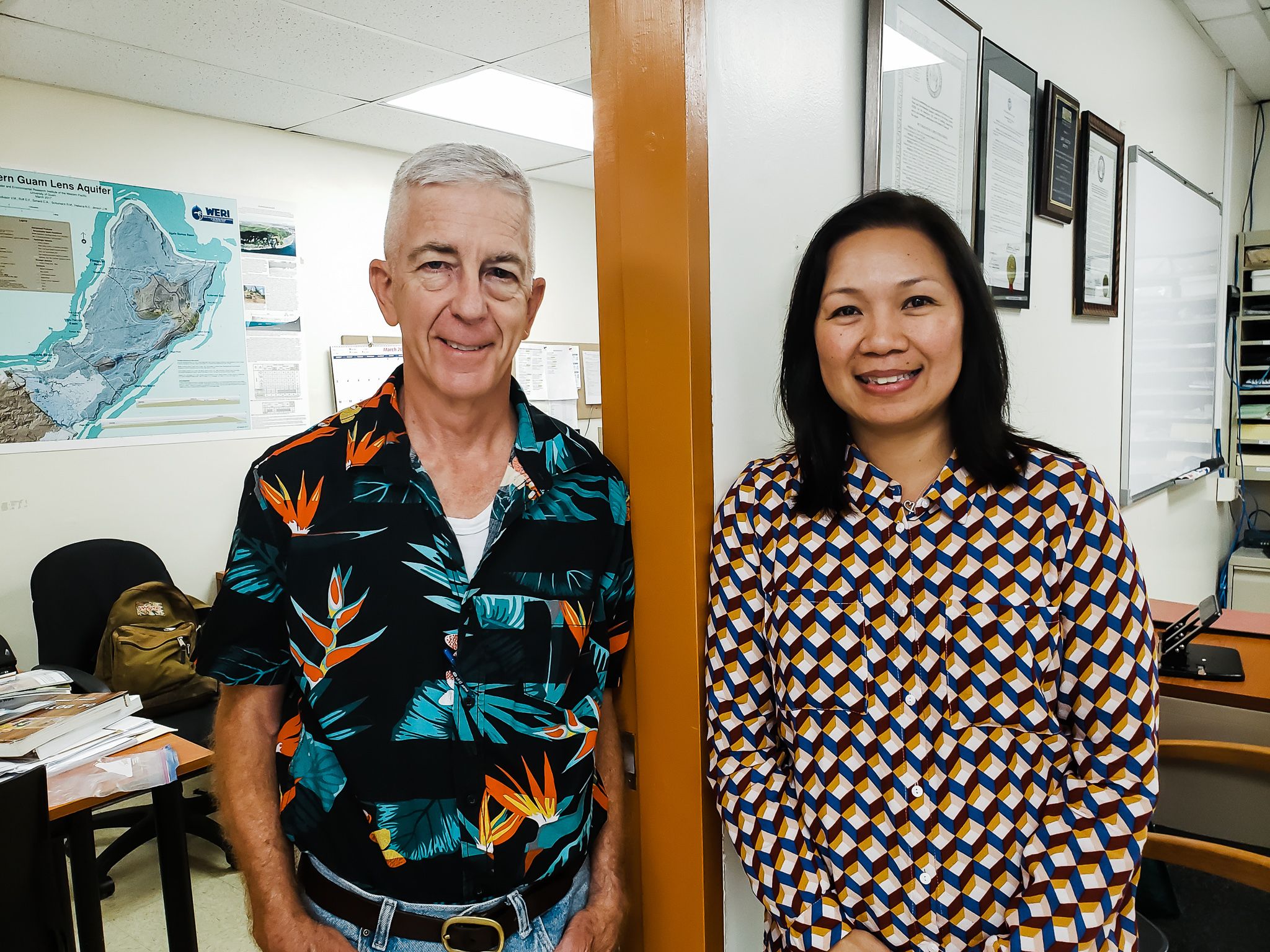WERI expands drinking water testing for public clients
WERI expands drinking water testing for public clients
WERI expands drinking water testing for public clients
4/4/2019

A lab assistant tests a water sample using an atomic absorption spectrophotometer, an analytical instrument used to test lead in drinking water.
The Water & Environmental Research Institute of the Western Pacific at the University of Guam (WERI) can now offer its drinking water testing services for a wider range of contaminants. With an extension of its Guam Environmental Protection Agency laboratory certification that it received in October, WERI’s drinking water testing facility can now test for nitrates, nitrites, copper, and heterotrophic bacteria, in addition to lead and coliform bacteria, which it has offered testing services for since the 1990s.
|
|
|
John Jenson, director of the Water & Environmental Research Institute of the Western Pacific, and Jennifer Cruz, manager of the Water Quality Analysis Laboratory at WERI. |
“We were doing the tests for many of those contaminants in the lab anyway,” said Jennifer Cruz, manager of the Water Quality Analysis Laboratory at WERI, referring to testing being done to support faculty and student research. “But gaining the additional EPA certification means that we can perform those tests for clients and do it in a manner that is convenient and cost-effective for them.”
The standard EPA certification is valid for three years.
Before the facility expanded its testing, clients had to send their drinking water samples to off-island labs, which presented not only an additional cost, but a challenge with time, as most of the tests need to be conducted within 24 to 48 hours of the sample being taken.
WERI provides testing for private construction companies, the Guam Waterworks Authority, military installations, and other organizations that must adhere to specific water standards, including businesses that provide food for airlines.
The lab’s water-testing capability is a significant source of revenue for the research facility. It conducts an average of 900 jobs and approximately 4,000 tests for clients each year.
The expanded testing capability is a valuable asset for both WERI and the University.
“If you’re looking for a strategic asset that we have now and can build such capacity on, this is one of them,” said John Jenson, director of WERI and professor of environmental geology.
Cruz has more plans to expand WERI’s testing with each EPA certification renewal. One of WERI’s faculty members is looking into testing for an organic compound that the lab does not test at this time.
“Our goal is to be able to apply organics testing to drinking water in the future,” Cruz said.
WERI is one of 54 water resources research institutes established at land-grant universities throughout the United States. The institute is the main provider of water testing and research for public, private, and governmental sectors across Guam, the Northern Mariana Islands, and the Federated States of Micronesia.

The Water & Environmental Research Institute of the Western Pacific, located on the University of Guam campus, is the main provider of water testing and research in the Micronesian region.

